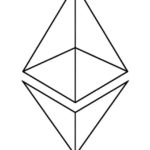Crypto Market Rebounds as Consumer Confidence Slips
On Friday, Bitcoin and many altcoins saw a surge as investors took advantage of lower prices. Ripple (XRP) gained 4%,while Chainlink (LINK),Bonk (BONK),and JasmyCoin (JASMY) climbed over 5%. This rally came after a report revealed a drop in U.S. consumer confidence to its lowest in two years.
Consumers are worried about tariffs and job cuts, fearing a potential recession. However, risky assets like cryptocurrencies often perform well during such times due to Federal Reserve interventions.Historically,the Fed has cut interest rates and used quantitative easing during economic downturns. Signs suggest the Fed may announce more rate cuts next week, boosting stocks and altcoins.
The U.S. dollar and bond yields fell, while gold hit a record high of $3,000. The Dow Jones, S&P 500, and Nasdaq 100 also rose, with the Russell 2000 climbing over 3%. The U.S. dollar weakened, and stocks surged, with the Dow Jones up by 625 points.
Altcoins like XRP, LINK, BONK, and JASMY rose as the U.S. seems to avoid a government shutdown.Senator Chuck Schumer noted that a shutdown would benefit figures like Elon Musk and Donald Trump. These cuts could signal a positive shift for the market.
Despite this, ther’s a risk of a “dead cat bounce,” a temporary recovery in a downtrend. An analyst from Janney Montgomery Scott said the market is “very oversold,” but a real bottom isn’t clear yet.XRP, LINK, BONK, and JASMY jumped as the U.S. economy showed resilience. A New York Times piece by Senator Chuck Schumer argued against a shutdown, benefiting Musk and Trump. most altcoins are down 30% from December highs,making them attractive buys. But, a full recovery isn’t guaranteed. A dead cat bounce, a brief rebound before a continued decline, is possible. The market remains oversold, but the Fed’s actions could stabilize it. For now, the market remains volatile.
- Consumer confidence is low due to tariffs and job cuts.
- Gold reached $3,000 for the first time.
- Investors are cautiously optimistic, but caution is advised.
For more insights, check The New York Times for updates.








